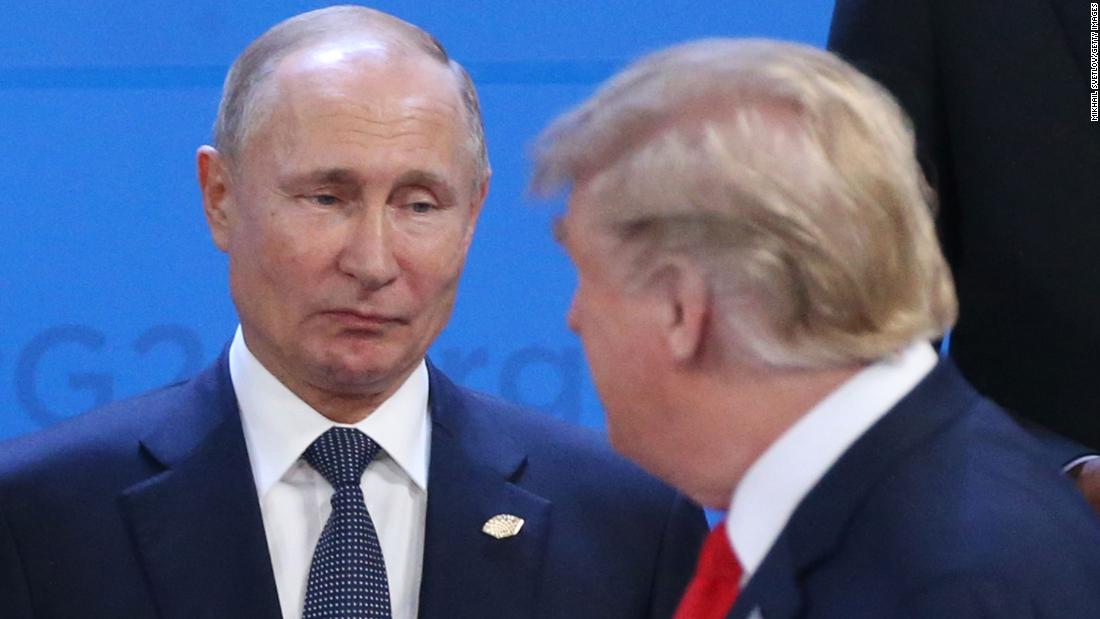
In a previously undisclosed secret mission in 2017, the United States successfully extracted from Russia one of its highest-level covert sources inside the Russian government, multiple Trump administration officials with direct knowledge told CNN.
A person directly involved in the discussions said that the removal of the Russian was driven, in part, by concerns that President Donald Trump and his administration repeatedly mishandled classified intelligence and could contribute to exposing the covert source as a spy.
The decision to carry out the extraction occurred soon after a May 2017 meeting in the Oval Office in which Trump discussed highly classified intelligence with Russian Foreign Minister Sergey Lavrov and then-Russian Ambassador to the US Sergey Kislyak. The intelligence, concerning ISIS in Syria, had been provided by Israel.
The disclosure to the Russians by the President, though not about the Russian spy specifically, prompted intelligence officials to renew earlier discussions about the potential risk of exposure, according to the source directly involved in the matter.

At the time, then-CIA Director Mike Pompeo told other senior Trump administration officials that too much information was coming out regarding the covert source, known as an asset. An extraction, or "exfiltration" as such an operation is referred to by intelligence officials, is an extraordinary remedy when US intelligence believes an asset is in immediate danger.
A US official said before the secret operation there was media speculation about the existence of such a covert source, and such coverage or public speculation poses risks to the safety of anyone a foreign government suspects may be involved. This official did not identify any public reporting to that effect at the time of this decision and CNN could not find any related reference in media reports.

Asked for comment, Brittany Bramell, the CIA director of public affairs, told CNN: "CNN's narrative that the Central Intelligence Agency makes life-or-death decisions based on anything other than objective analysis and sound collection is simply false. Misguided speculation that the President's handling of our nation's most sensitive intelligence—which he has access to each and every day—drove an alleged exfiltration operation is inaccurate."
A spokesperson for Secretary of State Mike Pompeo declined to comment. White House press secretary Stephanie Grisham said, "CNN's reporting is not only incorrect, it has the potential to put lives in danger."
Wide concerns about Trump in intelligence community
The removal happened at a time of wide concern in the intelligence community about mishandling of intelligence by Trump and his administration. Those concerns were described to CNN by five sources who served in the Trump administration, intelligence agencies and Congress.
Those concerns continued to grow in the period after Trump's Oval Office meeting with Kislyak and Lavrov. Weeks after the decision to extract the spy, in July 2017, Trump met privately with Russian President Vladimir Putin at the G20 summit in Hamburg and took the unusual step of confiscating the interpreter's notes. Afterward, intelligence officials again expressed concern that the President may have improperly discussed classified intelligence with Russia, according to an intelligence source with knowledge of the intelligence community's response to the Trump-Putin meeting.
Knowledge of the Russian covert source's existence was highly restricted within the US government and intelligence agencies. According to one source, there was "no equal alternative" inside the Russian government, providing both insight and information on Putin.
CNN is withholding several details about the spy to reduce the risk of the person's identification.
The secret removal of the high-level Russian asset has left the US without one of its key sources on the inner workings of the Kremlin and the plans and thinking of the Russian president at a time when tensions between the two nations have been growing. The US intelligence community considers Russia one of the two greatest threats to US national security, along with China.
"The impact would be huge because it is so hard to develop sources like that in any denied area, particularly Russia, because the surveillance and security there is so stringent," a former senior intelligence official told CNN. "You can't reacquire a capability like that overnight."
Months of mounting fear
The decision to pull the asset out of Russia was the culmination of months of mounting fear within the intelligence community.
At the end of the Obama administration, US intelligence officials had already expressed concerns about the safety of this spy and other Russian assets, given the length of their cooperation with the US, according to a former senior intelligence official.
Those concerns grew in early 2017 after the US intelligence community released its public report on Russian meddling in the 2016 election, which said Putin himself ordered the operation. The intelligence community also shared a classified version of the report with the incoming Trump administration, and it included highly protected details on the sources behind the intelligence. Senior US intelligence officials considered extracting at least one Russian asset at the time but did not do so, according to the former senior intelligence official.
In the first months of his administration, Trump's handling of classified intelligence further concerned intelligence officials. Ultimately, they decided to launch the difficult operation to remove an asset who had been working for the US for years.
The President was informed in advance of the extraction, along with a small number of senior officials. Details of the extraction itself remain secret and the whereabouts of the asset today

No comments:
Post a Comment